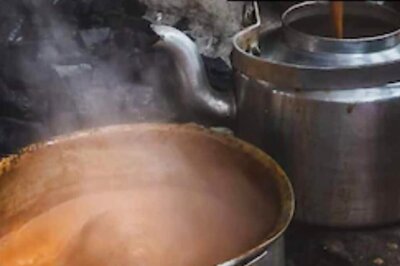
views
Have you ever noticed the image of the chariot on the Rs 50 note? Do you know where this chariot is located and what is the history of it? If you are curious to know, then you must read this article. India is a land of tradition and culture, where age-old customs, ancient structures, and artistic paintings have been passed down through generations, all symbolising India’s sovereignty. It is also home to numerous historical monuments that showcase the legacy of royal governance. Many historical structures built during the reigns of ancient kings have now become tourist attractions, standing as a testament to the rich history of the country. Let us know more about the chariot and its origin that we see on the Rs 50 notes.
In ancient India, different kings and emperors ruled different parts of the country. One such empire is the Vijayanagara Empire. The town of Hampi is a testament to the Vijayanagara Empire’s fine architecture that often amazes people. This town located in the state of Karnataka holds great historical significance. This place draws millions of tourists every year from all across the country.
As you approach the Hampi area, you will greeted by stunning stone gateways, hills, temple structures, etc speaking about the rich history of the place. The main tourist attraction of this place is Shree Vijaya Vitthala Temple. Although there is no idol, the magnificent temple structures and stone carvings captivate visitors. It was reportedly built by Garuda Devaraya in the Vijayanagara Empire in 1422.
The Vijayanagara Empire, which emerged in the 13th century, is said to have come to an end in the 15th century. They ruled the place for around 230 years. After that, the Bahmani Sultan from Talikota announced a war on the Vijayanagara Empire which forced them to flee from the place. They reportedly fled to Penugonda, located in present-day Andhra Pradesh.
The Bahmani Sultan then occupied the kingdom, looted its treasures, jewels and gold ornaments over three months, and spent another three months demolishing the kingdom’s stone structures, temples, and idols. This is the reason why the temple is in ruins today. The chariot we see on the Rs 50 notes was also part of the historical structure. It was made entirely of stone and was constructed with a remarkable seven-layer interlocking system.
According to reports, the magnificent chariot was beautifully sketched by Gunjan Barjad Priya, a tourist from Maharashtra who visited Hampi. She expressed her pride in visiting this place and mentioned that it was an indescribable experience to learn about the history of the Vijayanagara Empire.
India’s currency notes feature various heritage sites that represent its rich cultural history. The Rs 100 note depicts the Rani Ki Vav, a stepwell in Gujarat. The Rs 200 note showcases the Sanchi Stupa, reflecting Buddhist heritage. The Rs 500 note shows the Red Fort, representing India’s Mughal history, while the Rs 2,000 note features Mangalyaan, celebrating India’s technological achievements.
















Comments
0 comment